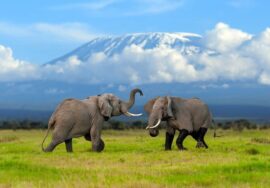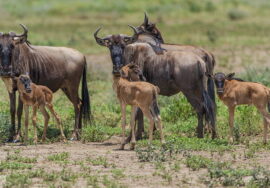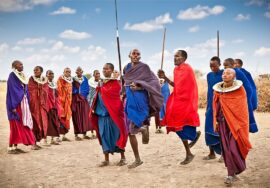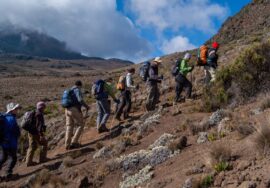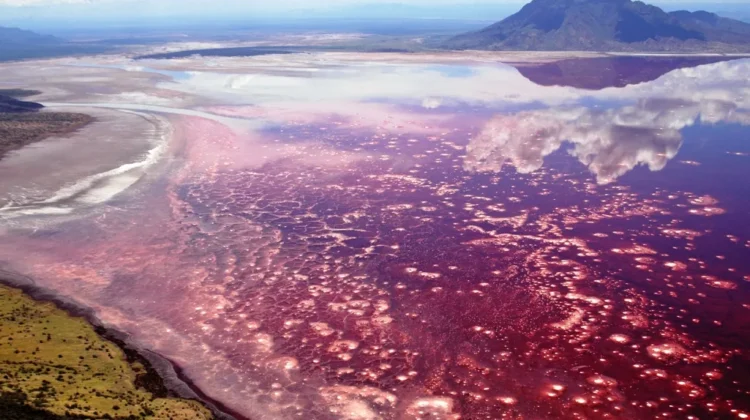
Tanzania’s Lakes: Explore the Beauty and Diversity of Inland Water
Tanzania’s Lakes, Tanzania has some of the most beautiful and unique lakes in the world. The best part is that they have a lot of different things to do and see, like swimming, kayaking, fishing, and looking for wildlife. As lakes usually do, they also provide a lot of water for animals and people in the area. We’ll tell you everything we know about Tanzania’s beautiful lakes in this piece!
Lake Victoria is Africa’s biggest lake.
Lake Victoria is a natural wonder that is home to a huge range of animals and interesting features. This huge body of water goes through Tanzania, Uganda, and Kenya. It is the biggest lake in Africa and the biggest tropical lake in the world by surface area. Even though it looks big, it’s not very deep. It’s only about 41 meters deep on average, so sunlight can reach deep down and feed a rich environment.
Many kinds of fish live in the lake, including more than 500 types of cichlids, many of which are only found in this area. These cichlids are known for having a wide range of looks and behaviors. They bring a lot of color and life to water environments. The underwater scene is just as colorful as the beaches of the lake. People often see the famous hippopotamus relaxing in the water or lying in the sun on the shore. The African clawless otters, the marsh mongoose, the sitatunga, the bohor reedbuck, the defassa waterbuck, and the cane rats are some of their friends.
There is also a lot of reptile life here, with the dangerous Nile crocodile being the most famous. It lives with several other turtle species that are only found in Lake Victoria. These include the African helmeted turtle, the Williams’ mud turtle, and the varied mud turtle. You’d rather see birds? Then get ready to smile. Over 300 kinds of birds live in Lake Victoria, such as the mysterious Shoebill, herons, geese, grey parrots, kingfishers, and the fish eagle.
The lake is even more beautiful because it has over 3,000 islets, such as the well-known Ssese Islands and Ukerewe Island. Each of these islets has its own unique mix of culture and scenic experiences. As you might expect, Lake Victoria is at the top of many people’s bucket lists. It has a lot of different kinds of plants and animals, interesting cultures, and stunning natural beauty.
Here are some fun facts about Lake Victoria that will wow other tourists:
An adventurer named John Hanning Speke gave it the name Queen Victoria in 1858.
People in the area call it Nnalubaale, which in Luganda means “the giver of life.”
Lake Tanganyika is the longest lake in the world.
With a length of 626 kilometers (420 miles) and a width of 50 kilometers (31 miles), Lake Tanganyika is the world’s biggest lake and the second-largest body of fresh water by volume. This beautiful lake is tucked between Tanzania, Burundi, Zambia, and the Democratic Republic of the Congo. It is full of amazing things.
Tanganyika has beaches with palm and acacia trees and water that is unbelievably clear blue. There are more than 250 species of fish and other marine animals living below the water’s surface. Many of these species can’t be found anywhere else on Earth. Hippos with their young play in the shallow water, and crocodiles watch from just offshore. There are lots of birds, from brightly colored kingfishers to huge fish eagles that swoop down to catch their food.
Lake Tanganyika is interesting because it holds about sixteen percent of the world’s fresh water on the top. It gets water from flowing rivers, and the water that comes out of it goes into the Congo River system. This lake is full of life and beauty, and a trip there will make memories that will last a lifetime.
Known as the “meromictic lake,” Lake Malawi
Lake Malawi is really unique. At more than 29,000 square kilometers, it’s the ninth-largest lake in the world and the third-largest lake in Africa. One thing that makes Lake Malawi stand out is that it is one of the few meromictic lakes in the world. Meromixis means that the water layers in Lake Malawi don’t mix with each other. The warmer, more oxygenated top layer doesn’t mix with the colder, saltier, and less oxygenated bottom layer very often.
This is because Lake Malawi is very deep—up to 700 meters—and the nature of the valley around it makes the water flow in very different ways. The mountains next to the lake also add more nutrients than it can handle, which makes it hard for the water to move around.
Lake Malawi’s many different types of water areas support a huge variety of species. The lake is home to more than 1,000 kinds of colorful cichlid fish, and new species are still being found. The cichlids have developed special ways to live in the different areas and temperatures of the lake. Crabs, worms, shrimp, and jellyfish are some other endemics. Lake Malawi has more fish types than any other lake in the world. It is a freshwater coral reef.
Lake Rukwa.
Lake Rukwa is an interesting body of water that changes a lot with the seasons. It is located in Tanzania’s beautiful Southern Highlands. With the wet season coming up, Lake Rukwa turns into a huge inland sea that covers more than 2,600 square kilometers. When the dry season comes, though, the lake shrinks a lot, leaving behind a web of swamps and waterways.
The changing water levels have a big effect on how the lake looks and on the animals that live there. The lake is full of fish and water plants when the water level is high. Crocodiles are just below the water’s surface, where hippos relax. More than 400 kinds of birds come to Lake Rukwa to eat and build their nests in the papyrus reeds.
In the dry season, however, things look very different. As the water levels drop, huge fields appear, and the lake changes into a large floodplain with pools and wetland areas spread out across it. Unique changes happen in the lives of animals. Small streams and pools are safe places for fish to stay. Like animals that go into hibernation, crocodiles dig holes in the ground and go to sleep. Hippos stay cool in the leftover pools, which are pretty crowded, and birds gather wherever there is water.
Even though the water levels change a lot, Lake Rukwa is still an extremely important environment for Tanzania.
The Salt Lake is Lake Eyasi.
Lake Eyasi is a big salt lake at the bottom of the Great Rift Valley. It is south of Serengeti National Park and southwest of Ngorongoro Crater.
This one-of-a-kind lake is surrounded by steep cliffs and savannah fields. It is known for its high salt content and wide range of birds. Minerals and salts have built up in the water over years of constant evaporation in the hot tropical sun, making it look milky and cloudy. The shallow water covers more than 400 square kilometers, but the lake level changes a lot based on how much rain falls.
The high salt content makes for a unique ecosystem that can live in dry conditions. The mineral-rich water is great for algae and bacteria. For this reason, lots of water birds come to Lake Eyasi to eat these tasty treats.
Along the muddy shores, flamingos, pelicans, storks, and ducks relax, and birds of prey like fish eagles fly around above. Animals that graze, like zebras, antelopes, and baboons, live on the grassy fields around the lake.
In this one-of-a-kind and ancient setting, where high salinity and a wide range of birds are common, Lake Eyasi is important for more than just its natural beauty. Discoveries made by archaeologists around the lake show that people lived there 200,000 years ago.
The Flamingo Lake is Lake Manyara.
Lake Manyara is a small, alkaline lake that covers 230 square kilometers. It is at the base of the Great Rift Valley cliff. But even though it’s small, it’s very beautiful and has a lot of wildlife.
The “Flamingo Lake” in Manyara gets its name from the large number of Lesser Flamingos that live there. Over 400,000 of these bright pink birds come to the wet shores of Manyara to eat on algae and lay their eggs. Watching a flamingo dance is like being in a dream: thousands of thin legs wade through blue water at the same time, their necks dipping at the same time to filter feed.
Besides flamingos, the lake is home to more than 400 different kinds of birds, such as pelicans, storks, cormorants, kingfishers, eagles, and ravens. Birds like babblers, weavers, hornbills, and starlings also like the acacia forests around the lake. Is Manyara a great place to watch birds? Of course!
For tourists, Lake Manyara National Park is a great place to see wildlife from their cars or while walking through the bush. Lions that like to climb trees relax on branches, while hippos take it easy in pools. Blue monkeys run through the trees, and thousands of flamingos line the shores, making them pink.
Tanzania’s lakes are truly one of a kind in that they are both beautiful and culturally important. Whether you see the flamingo ballet at Lake Manyara, dive into the world below the surface of Lake Tanganyika, or be amazed by Lake Natron’s unique environment, each lake will stay with you forever.


